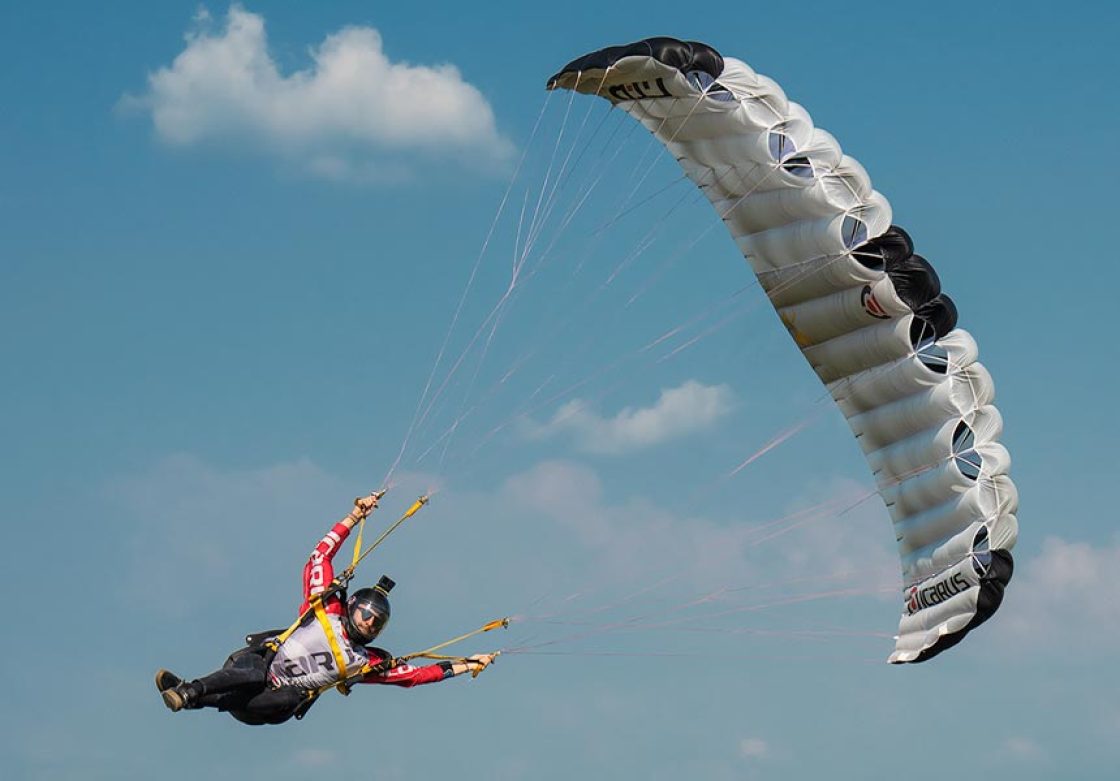You see them every day, those impressive flights of canopy at high speeds, with turns that seem crazy but that finally end in a smooth and controlled landing. Every skydiver dreams or has dreamed of achieving that type of landing, of being able to fly a high-performance canopy so well, and of course, everyone can have that ability. Still, it is not something to be taken lightly.
Before starting to fly a high-performance canopy, there are some aspects that we have to take into account since it is not only a downsize, but it is also a meaningful change in terms of the type of cells and performance.
The first difference we will feel is in terms of the type of flight. Cross-braced cells allow greater tension to be resisted in the canopy, creating a more rigid wing, allowing for more efficient flight and giving us a more excellent flight range.
But the main characteristic that we are going to notice is when inducing speed to the canopy or making a more aggressive turn since we are going to feel a significant difference in the recovery arc. We must pay attention to it and learn to know it in our high-performance canopy before continuing to progress since that can induce us to a very dangerous low turn.
Once we know the flight and recovery characteristics of our high-performance canopy, we can start to get the most out of it, giving it speed. In this type of canopy, higher speed means better flare, so we can gradually begin to make 90º turns to introduce ourselves into the world of high-performance landings, start to feel how we come out of the turn with the recovery arc of our canopy, and how that speed becomes a powerful flare.
